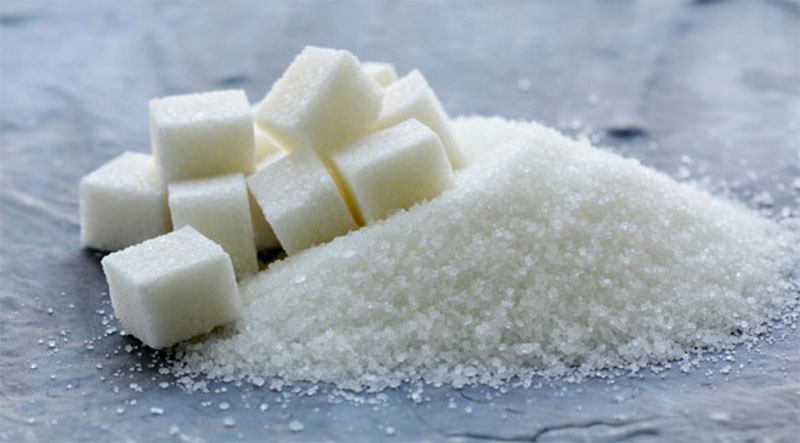
Drug Usage and the Elect
God’s Word and the Modern World Have a Lot to Say!
The use of drugs by citizens across the world is at an all-time high, though these compounds have been used probably since the beginning of civilization 6,000 years ago. Their toll on civilization is enormous! This toll is attributed to both prescribed and illicit drugs, with statistics from around the world displayed on the next page.
The word drug means “any substance used as a medicine or as an ingredient in a medicine which kills or inactivates germs, or affects any body function or organ” (M. Agnes, Webster’s New World College Dictionary, Fourth Edition, Wiley Publishing, Inc., Cleveland, Ohio, 2004). Using this definition, then a drug may be used for good or for evil … enhancing life or suppressing it.
Unprescribed drug usage, which includes the use of tobacco, alcohol, and illicit drugs, caused an estimated 507,000 deaths in 2021. However, there are many indirect deaths caused by these substances, which in 2021 totalled an estimated 9.8 million. The total of the two figures is a staggering 10.3 million needless deaths due to substance abuse in 2021! (H. Ritchie and M. Roser, Drug use, Our World in Data, 2019, www.ourworldindata.org; from G. Roth et.al., Global, regional, and national age-sex specific mortality for 282 causes of death in 195 countries and territories, 1980-2017: a systematic analysis of the global burden of disease study 2017, The Lancet 392 [10159], 1736-1788, 2018). Again, these statistics are shown on the next page.
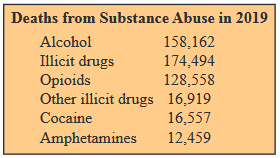 Death from substance abuse disorders in 2019 are listed in the figure to the right. Many who die from substance abuse are young.
Death from substance abuse disorders in 2019 are listed in the figure to the right. Many who die from substance abuse are young.
From 60 to 70% of adult Americans take at least one prescribed drug (M. Schroeder, Death by prescription, U.S. News, September 27, 2016, www.health.usnews.com). Prescription drugs are the third leading cause of death after heart disease and cancer (P. Gotzsche, Prescription drugs are the third leading cause of death, The BMJ Opinion, June 16, 2016, www.blogs.bmj.com; P. Gotzsche, Our prescription drugs kill us in large numbers, National Library of Medicine, October 30, 2014, Pol Arch Med Wewn, 2014, 124 [11], 628-634), although data on these deaths is difficult to find in any lists: medical statisticians, doctors, and pharmaceutical companies try to suppress this information for obvious reasons, since this truth would shatter the faith people would have in drugs and limit their use, and therefore reduce the profits of pharmaceutical companies.
Drugs for Good or Evil
Most drugs used today were also utilized in centuries past. In fact, many drugs used in modern medicine are purified plant compounds. There are over 100 active ingredients derived from plants for use in drugs and medicines, such as codeine (from Papaver somniferum poppies), Gitalin (from Digitalis purpurea, or purple foxglove), menthol (from Mentha or mint species), and quinine (from Cinchona ledgeriana, the quinine tree) (A. Helmenstine, List of medicines made from plants, ThoughtCo, February 3, 2020, www.thoughtco.com). However, refined compounds from plants do not contain the cofactors needed to produce a response in the body without side effects. Moreover, many drugs are derived from petroleum and other sources, and are inherently toxic to the body. They may cover up symptoms of illness but elicit oftentimes serious — sometimes fatal — side effects.
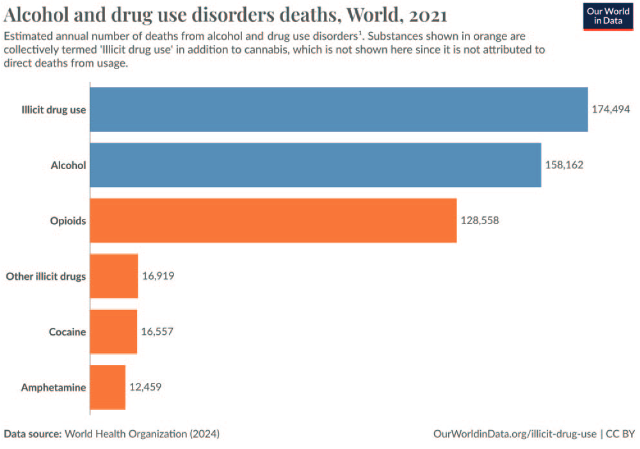
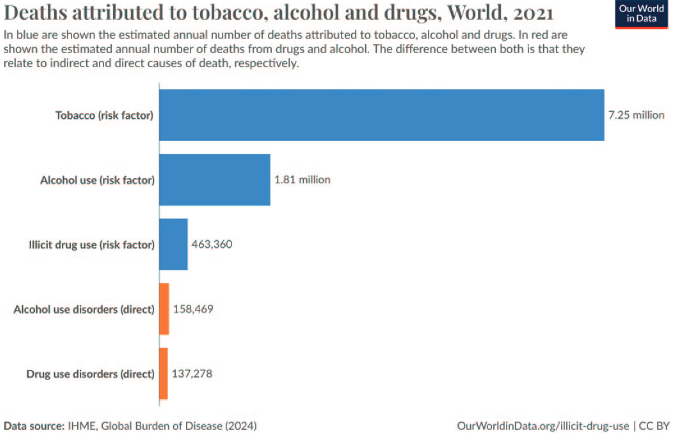
In terms of Godly intent, a drug that is used to uplift one’s daily living, cure sickness, and prolong life would be termed good. It would be a plant material as stated in Revelation 22:1-2:
“And he showed me a pure river of water of life, clear as crystal, proceeding from the throne of God and of the Lamb. In the middle of its street, and on either side of the river, was the tree of life, which bore twelve fruits, each tree yielding its fruit every month. The leaves of the tree were for the healing of the nations.”
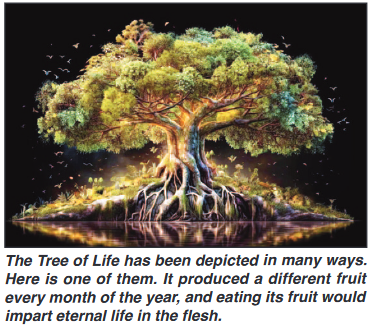 This is the same tree of life we read about in the Garden of Eden. This species of tree was in the midst of the garden among other trees that were beautiful to look upon and good for food (Genesis 2:9), and if eaten would impart eternal life in the flesh to the eater. This is proven in Genesis 3:22, where Yahweh Elohim stated that, “And now, lest he put out his hand and take also of the tree of life, and eat, and live forever….” This eternal life in the flesh would be imparted even if the person who consumed it had sinned! This fruit had to be filled with incredible nourishing and healing properties to sustain eternal life even to a sinner, such as Adam and Eve were after they had eaten fruit from the tree of the knowledge of good and evil (Genesis 2:16-17; 3:1-7, 22).
This is the same tree of life we read about in the Garden of Eden. This species of tree was in the midst of the garden among other trees that were beautiful to look upon and good for food (Genesis 2:9), and if eaten would impart eternal life in the flesh to the eater. This is proven in Genesis 3:22, where Yahweh Elohim stated that, “And now, lest he put out his hand and take also of the tree of life, and eat, and live forever….” This eternal life in the flesh would be imparted even if the person who consumed it had sinned! This fruit had to be filled with incredible nourishing and healing properties to sustain eternal life even to a sinner, such as Adam and Eve were after they had eaten fruit from the tree of the knowledge of good and evil (Genesis 2:16-17; 3:1-7, 22).
Moreover, even the leaves of this wonderful tree of life were filled with healing powers, as we read in Revelation 22:2. These healing qualities emanated from the organic compounds contained within the cells of this marvelous tree, as well as perhaps the spiritual essence of the tissue. They gave life, negating destructive tendencies and renewing genetic components.
Even the death-giving properties of the tree of the knowledge of good and evil could not overcome the life-recuperative powers of the fruit and leaves of the tree of life. Disease and suffering fell to ignominy in the face of this tree’s qualities.
The Great Divide
Here we see clearly the great division between drugs which heal, and drugs that kill and maim. We must begin at the beginning: the tree of life and the tree of the knowledge of good and evil. Let us first look at drugs that heal, those designed by the Creator to build and sustain life.
Tree of life. Leaves and fruit of this species of tree contained compounds that were able to reverse and repair the destructive effects of free radicals and toxic degeneration of cell membranes and organelles (Genesis 3:22; Revelation 22:2; Ezekiel 47:12).
Mandrakes. This short-stemmed flowering plant of the nightshade family has large forked roots, looking much like a human body with open arms and legs. It resembles the ginseng plant in many ways and is noted for its body-mind healing properties. In Genesis 30:14-16 and Song of Solomon 7:13 we read of its aphrodesiac and fertility enhancing properties.
Hyssop. This herb was used as a cleaning or antiseptic agent (Leviticus 14:4-6; Psalm 51:7).
Figs. Figs used as a poultice can kill the bacteria that cause boils, as for Hezekiah (II Kings 20:1-11).
Balm. This concoction of various herbs was used for various ailments including pain (Genesis 37:25; 43:11; Jeremiah 8:22; 46:11; 51:8; Ezekiel 27:17). It was also used as an embalming agent (Genesis 50:2-3, 26). It was a commonly traded herb (Genesis 37:25; 43:11).
Pomegranates. This fruit is rich in melatonin, seratonin, and other tryptamines (Song of Solomon 4:13).
Henna. This fragrant herb has various beneficial effects (Song of Solomon 4:13).
Spikenard. Spikenard boosts seratonin, dopamine, and GABA in the body (Song of Solomon 1:12; 4:13-14). It was used to anoint Jesus for His death (Mark 14:3; John 12:3).
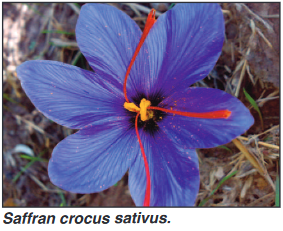 Saffron. This aromatic herb is known in Scripture for bringing joy (Song of Solomon 4:14).
Saffron. This aromatic herb is known in Scripture for bringing joy (Song of Solomon 4:14).
Calamus (or sweet flag). (Song of Solomon 4:14). Also known as kaneh-bosem, this herb yields an aromatic oil used in liqueurs and perfumes, and also serves as a stimulant and for treating indigestion.
Cinnamon. This spice has in it safrole (Song of Solomon 4:14). It also was used in the holy anointing oil (Exodus 30:23).
Frankincense. A tranquilizer, frankincense contains dehydrocobaitic acid, which affects GABA receptors much like Valium does (Song of Solomon 4:14). It was given as a gift by the Magi to Christ after His birth (Matthew 2:11). The herb was also used in the Testimony oil (Exodus 30:34) and in the various offerings (Leviticus 2:1-2, 15-16; 5:11; 6:15; 24:7; I Chronicles 9:29; Nehemiah 13:5, 9).
 Myrrh. Another tranquilizer, myrrh targets the mu and delta-opioid receptors, like opium does (Song of Solomon 4:14). Like Frankincense, myrrh was used in the holy anointing oil (Exodus 30:23), and was commonly traded or used as gifts in ancient times (Genesis 37:25; 43:11). It was used in the purification of the women who might marry King Ahasuerus (Esther 2:12). David spoke of its use as a fragrant oil (Psalm 45:8), as did Solomon (Proverbs 7:17; Song of Solomon 1:13; 3:6; 4:6, 14; 5:1, 5, 13), and the Magi presented it as a gift to Jesus after His birth (Matthew 2:11). Jesus was presented wine mingled with myrrh to drink while hanging on the stake at His crucifixion (Mark 15:23), and He was buried in the tomb of Joseph with a mixture of 100 pounds of myrrh and aloes (John 19:39).
Myrrh. Another tranquilizer, myrrh targets the mu and delta-opioid receptors, like opium does (Song of Solomon 4:14). Like Frankincense, myrrh was used in the holy anointing oil (Exodus 30:23), and was commonly traded or used as gifts in ancient times (Genesis 37:25; 43:11). It was used in the purification of the women who might marry King Ahasuerus (Esther 2:12). David spoke of its use as a fragrant oil (Psalm 45:8), as did Solomon (Proverbs 7:17; Song of Solomon 1:13; 3:6; 4:6, 14; 5:1, 5, 13), and the Magi presented it as a gift to Jesus after His birth (Matthew 2:11). Jesus was presented wine mingled with myrrh to drink while hanging on the stake at His crucifixion (Mark 15:23), and He was buried in the tomb of Joseph with a mixture of 100 pounds of myrrh and aloes (John 19:39).
Agarwood. This oil is known for its sedative, hypnotic, and analgesic qualities (S. Wang, et. al.,Agarwood essential oil displays sedative-hypnotic effects through GABAergic system, Molecules 22 (12):2190, December 9, 2017).
Onycha. This spice is apparently from an aromatic mussel [shcheleth], which would be found in Mediterranean waters (Exodus 30:34).
Galbanum. The Hebrew chelbnah, or galbanum, refers to an odorous, fatty gum, presumably from a tree or shrub (Exodus 30:34).
Stacte. This spice is similar to galbanum, and is an aromatic gum, most likely from a tree or shrub (Exodus). The Hebrew word for stacte is nataph, meaning “to ooze, or fall in drops.”
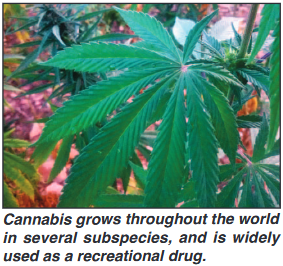 The holy anointing oil, spoken of in Exodus 30:23-35, was composed of myrrh, cinnamon, and “sweet-smelling cane,” plus cassia and olive oil. There was also an oil concocted to place before the Testimony in the tabernacle of meeting; this was made of sweet spices, stacte, onycha, galbanum, and frankincense (Exodus 30:34-37). This oil was rich in psycho-active alkylbenzenes (myristicin, linalool, elemicin, eugenol, estragola, and safrole.
The holy anointing oil, spoken of in Exodus 30:23-35, was composed of myrrh, cinnamon, and “sweet-smelling cane,” plus cassia and olive oil. There was also an oil concocted to place before the Testimony in the tabernacle of meeting; this was made of sweet spices, stacte, onycha, galbanum, and frankincense (Exodus 30:34-37). This oil was rich in psycho-active alkylbenzenes (myristicin, linalool, elemicin, eugenol, estragola, and safrole.
There was also Tabernacle incense, which the high priest would bring into the Holy of Holies on the Day of Atonement and burn on coals of a censor to create a fragrant cloud that would cover the mercy seat (Leviticus 16:12-13). The oils and alkybenzenes in the vapor created a number of psychoactive effects.
Other Drugs in the Ancient World
There are many other drugs used anciently as well as today. Here is a partial listing. Keep in mind that many of the drugs used today are extracts of these plants, refined to leave out certain components which, if included, will make the substance more effective and with fewer side effects.
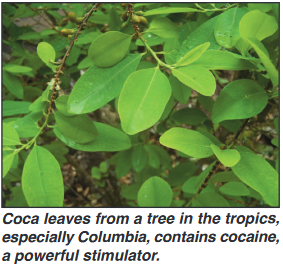 Harmel. Used by West Indian, Iranian, Andean cultures
Harmel. Used by West Indian, Iranian, Andean cultures
A flowering plant that is converted to harmine by a distillation process
A strong anti-depressant, and treats inflammation and fever
Seeds are available in most Iranian and Middle Eastern grocery stores.
Cannabis. Used for millennia in Central and South Asia
Used by Sikhs for a long time; a meditation aid and pain killer
Nutmeg, Used recreationally in ancient Indian and Asian cultures, especially for asthma and heart problems
Believed by many ancient cultures to have magical powers
Coca leaf. Chewed or brewed for a tea by the Mayans; a powerful stimulator
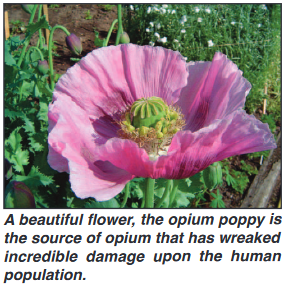 Psilocybin. Used by the ancients in the Sahara Desert and in Central and South American cultures
Psilocybin. Used by the ancients in the Sahara Desert and in Central and South American cultures
“Magic mushrooms” that will cause nausea and hallucinations; they believed this offered entrance into higher intelligence
Opium. First cultivated by the Sumerians in 3400 B.C.; used in Rome, Greece, India, Egypt, Assyria, and Sumer
Made from the latex in the husk of the poppy flower, from which morphine is produced
Relieves pain, induces sleep, causes diarrhea, and improves libido
Today, it is used to produce heroin, much of which is produced in Afghanistan and other nations.
Blue lotus. Especially used in ancient Egypt, to make people more talkative, relaxed, or aroused
Gives blissful sleep
Flowers are brewed ino tea or alcohol.
Used by Odysseus in The Odyssey; he lost his desire to fight the Greeks after using it, and returned to Ithaca.
Effects of Prescription Drugs
Prescription drugs can be grouped into several categories. I have selected three of the major ones, and have listed the most common effects of them on the body.
Opioids.
Mood changes
Depression
Drowsiness
Impaired memory, judgement, and attention
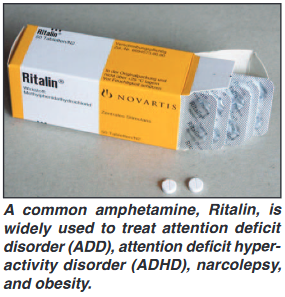 Sedatives, hypnotics, and anti-anxiety drugs (barbiturates, benzodiazepines, sleep medications)
Sedatives, hypnotics, and anti-anxiety drugs (barbiturates, benzodiazepines, sleep medications)
Mood swing
Inappropriate aggressiveness or sexual behavior
Memory and attention problems
Disorientation
Impaired coordination
Feeling drowsy or “stoned”
Coma
Stimulants (amphetamines, methylphenidate)
Paranoia
Anger
Agitation
Seizures
Reduced sleep
Reduced interest in eating
It is very sobering to realize that prescription drugs can affect moral judgment, as revealed in a study published in Cellular Biology and reviewed by W. Lemeric in Christianity Today (July 9, 2015, www.christianitytoday.com). The researchers discovered that people receiving drugs to treat depression and Parkinson’s disease were likely to feel more inclined to cause harm to others than those not taking the drugs. This effect is multiplied once a person becomes addicted to a drug, for, as M. Loftus states in “Is addiction a disease? Yes, and much more” (Christianity Today, December, 2016, www.christianitytoday.com), “Addicts are moral agents, in community, with biology working against their spiritual goals.”
Both prescription and illicit drug use has a strong effect on moral judgment. According to H. Williams (Moral spiritual changes in drugs examples: priorities!, August 25, 2024, www.spiritualfile.com):
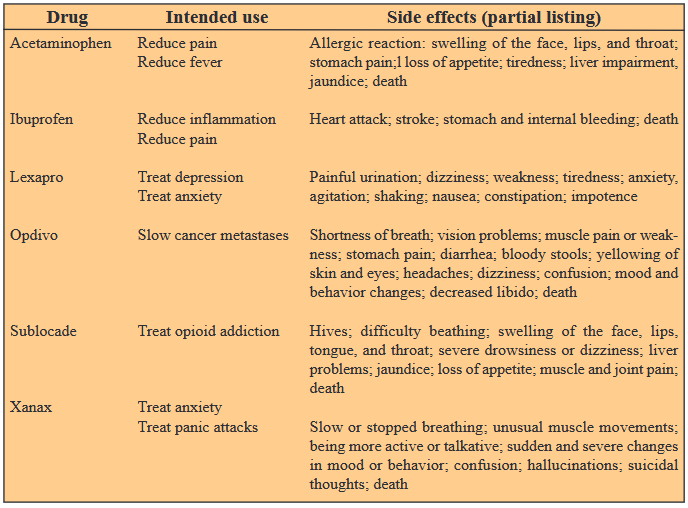
“According to a study published in the Journal of Substance Abuse Treatment, drug addition can lead to a decline in moral judgment, possibly due to the effects of substances on the brain’s decision-making and impulse control areas. A survey by the National Center on Addiction and Substance Abuse showed that addicts often lie, steal, and sometimes engage in more serious criminal behaviors to support their addiction.
“Substance abuse tends to harm an individual’s spiritual self. Many people replace spiritual fulfillment with drug use, leading to emptiness that feeds into the addiction cycle (American Journal of Pastoral Counseling). Drug addiction does not only impact the individual using drugs; it can also cause profound moral and spiritual disruption and pain to those around them, including family members and friends (Journal of Family Issues).”
These comments have been reinforced by many researchers and commentators, such as summarized in Science Daily (July 13, 2016):
“Research has shown that stimulant users often find it difficult to identify other people’s emotions, particularly fear, and to show empathy. These aspects play an important role in moral decision making. Other studies have pointed to structural and functional abnormalities in especially the frontal regions of their brains among stimulant users. These areas are engaged when moral judgments have to be made.”
While the comments above refer mainly to drugs such as cocaine, heroin, methamphetamines, marijuana, LSD, Ecstasy, and others, prescription drugs have many effects on the mind and spirit besides effects on the body, which they are designed for. Six of the thousands of available drugs are listed on page 7 (Drugs and medications A to Z, www.drugs.com).
Drugs in general are harmful in even small amounts, in doses far below the recommended use level as indicated by D. Barlett in “Dangerous in small amounts: ten nondrug substances that cause harm (Journal of Emergency Nursing, 29:377-379, 2003, www.jenonline.org.). For instance, many commonly used medications have serious toxicity in children when ingested in small doses.
“The toxicologic characteristics of methyl salicylate, camphor, topical imidazolines, benzocaine, and diphenoxylate-atropine are striking examples. All of these medications except Lomotil are over-the-counter, and therefore are often perceived as minimally harmful when ingested. For all of these substances, however, doses as little as 1/4 teaspoon or 1/2 tablet can have serious or fatal consequences” (E. Liebelt and M. Shannon, Small dose, big problems: a selected review of highly toxic common medications, Pediatric Emergency Care 9 [5]: 292-297, October, 1993, www.pubmed.ncbi.nlm.nih.gov).
Addictive Foods
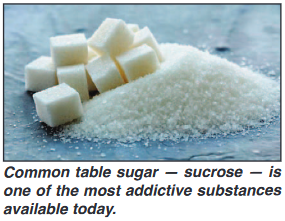 Modern society has concocted a wide array of not only “foodless foods,” but highly addictive foods that contain refined sugar and many toxic additives. As shown in a literature review by S. Ahmed et. al. (Sugar addiction: pushing the drug-sugar analogy to the limit, Current Opinions in Clinical Nutrition and Metabolic Care 16 [4]: 434-439, July, 2013, www.pubmed.ncbi.nlm.nih.gov):
Modern society has concocted a wide array of not only “foodless foods,” but highly addictive foods that contain refined sugar and many toxic additives. As shown in a literature review by S. Ahmed et. al. (Sugar addiction: pushing the drug-sugar analogy to the limit, Current Opinions in Clinical Nutrition and Metabolic Care 16 [4]: 434-439, July, 2013, www.pubmed.ncbi.nlm.nih.gov):
“Available evidence in humans shows that sugar and sweetness can induce reward and craving that are comparable in magnitude to those induced by addictive drugs. Although this evidence is limited by the inherent difficulty of comparing different types of rewards and psychological experience in humans, it is nevertheless supported by recent experimental research on sugar and sweet reward in laboratory rats. Overall, this research has revealed that sugar and sweet reward can not only substitute to addictive drugs, like cocaine, but can even be more rewarding and attractive. At the neurobiological level, the neural substrates of sugar and sweet reward appear to be more robust than those of cocaine (i.e., more resistant to functional failures).”
Adding to this perspective that refined sugars are highly addictive is an animal study performed by N. Avena, et. al. (Evidence of sugar addiction: behavioral and neurochemical effects of intermittent, excessive sugar intake, Neuroscience Biobehavior Reviews 32 [1]: 20-39, May 18, 2007, www.pmc.ncbi.nlm.nih.gov). In it the researchers did indeed discover a dependency that developed in the rat when offered refined sugar.
“Some obese and bulimic patients in particular may develop an unhealthy dependence on palatable food that interferes with well-being. The concept of ‘food addiction’ materialized in the diet industry on the basis of subjective reports, clinical accounts, and case studies described in self-help books. The rise in obesity, coupled with the emergence of scientific findings of parallels between drugs and abuse and palatable foods, has given credibility to this idea. The reviewed evidence supports the theory that, in some circumstances, intermittent access to sugar can lead to behavior and neurochemical changes that resemble the effects of a substance of abuse. According to the evidence in rats, intermittent access to sugar and chow is capable of producing a ‘dependency.’ This was operationally defined by tests for bingeing, withdrawal, craving, and cross-sensitization to amphetamine and alcohol. The correspondence to some people with binge eating disorder or bulimia is striking …. What this review demonstrates is that rats with intermittent access to food and a sugar solution can show both a constellation of behaviors and parallel brain changes that are characteristic of rats that voluntarily self-administer addictive drugs. In the aggregate, this is evidence that sugar can be addictive.”
Given the option, most rats will choose sugar rather than cocaine, and they will even endure self-administered electric shocks to get it. Humans are not much different. As stated by M. Zaraska: ?
“People who’ve had bariatric (gastric bypass) surgery sometimes continue to overindulge in highly processed foods, those made from white flour, sugar, butter, and the like, even if it means later enduring vomiting and diarrhea. Daily snacking on processed foods, recent studies show, rewires the brain’s reward circuits. Cravings for tasty meals light up the brain just like craving for cocaine do, prompting some researchers to ask whether products such as fries or cookies can trigger addiction akin to that associated with drugs or alcohol” (Food can be literally addictive, new evidence suggests, Scientific American, September 11, 2023, www.scientificamerican.com).
Add to this a statement made by a physician at the Cleveland Clinic, a respected source of health information (This is why artificial sweeteners are bad for you, Cleveland Clinic Health Essentials, April 20, 2023, www.health.cleveland.clinic.org):
“Nutritionally, sugar doesn’t have much to offer you in terms of your health. There aren’t any nutrients in it. No vitamins. No protein. None of the good things that keep your body functioning at its best.
“What sugar does have going for it is that it lights up your nervous system. Eating sugar releases dopamine in your body. That’s the feel-good chemical that brings on pleasure. It’s the same chemical that’s released when people who smoke light up, or when people with substance use disorder take their drug of choice.
“‘Sugar is absolutely addicting,’ Dr. Young states. ‘In addition to stimulating the areas of the brain related to addiction, eating sugar drives your blood sugar up. That’s followed by a blood sugar drop. And then you crave more sugar and carbohydrates. Over and over and over again. It’s a rollercoaster.’”
A Yale University study created a “food addiction scale,” which found that 20% of adults are addicted to food … people who go out of their way to secure their favorite food and indulge even to the point of feeling ill. Despite adverse consequences of this eating habit they continue to consume these refined foods. Again, quoting Zaraska:
“Ashley Gearhardt, a clinical psychologist at the University of Michigan, argues that highly processed foods are vastly different from what our ancestors used to consume. ‘Foods that are very high in fat and carbohydrate in a kind of an equal ratio — they don’t exist naturally,’ she says. ‘It’s something that’s designed by food scientists in a laboratory to look a certain way, feel a certain way in your mouth, smell a certain way when you open the package.’ A 2021 study showed, for example, that people with binge eating disorder exclusively overeat ultra-processed foods. ‘People aren’t losing control over beans,’ Gearhardt says” (in M. Zaraska, 2023).
The drug-like effects of sugar are magnified when it is combined with fats, as proven in a study in 2018 where the scientists showed that, compared with equally caloric foods containing only fat or only a carbohydrate, those made with both ingredients are far more efficient at activating the striatum, a part of the brain’s reward center that is implicated in additions (A. DiFeliceantonio et. al., Supra-additive effects of combining fat and carbohydrate on food reward, Cell Metabolism 28 [1]: 33-44, July 3, 2018, www.sciencedirect.com). Avena (2007) stated that “Ultra-processed foods are highjacking the brain in a way you’d see with addiction to drugs.”
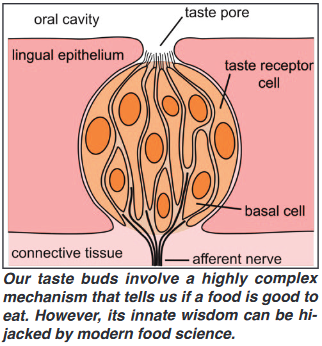 The human palate is designed to seek out sweet foods. Our tongues have a sophisticated detection system to detect salt, sweet, sour, and bitter flavors, and their complex coordination I believe is tied to the brain’s “appestat” to signal which foods are the best for us to eat at any particular time. These preferences will change, of course, over time as our nutritional needs change. Entire books have been written on the subject of sweet preference as it develops within a person’s development from child to adult, such as J. Weiffenbach, Taste and Development: the Genesis of Sweet Preference, National Institute of Health, 1977.
The human palate is designed to seek out sweet foods. Our tongues have a sophisticated detection system to detect salt, sweet, sour, and bitter flavors, and their complex coordination I believe is tied to the brain’s “appestat” to signal which foods are the best for us to eat at any particular time. These preferences will change, of course, over time as our nutritional needs change. Entire books have been written on the subject of sweet preference as it develops within a person’s development from child to adult, such as J. Weiffenbach, Taste and Development: the Genesis of Sweet Preference, National Institute of Health, 1977.
God designed the tongue to desire sweet foods, and the reason is quite simple: sweet taste in natural foods growth on fertile soils with open-pollinated varieties are naturally high in minerals as well; for many crops high sugar levels are also correlated with high protein and lipids (A. Beddoe, The Intelligent Farmer, Back to Your Roots Solutions, Inc., www.backto-your-roots.com). The modern food industry has taken advantage of that God-created, inborn proclivity by sweetening so many foodless, refined foods with refined sugars so people will prefer them, the taste buds thinking that the food is carrying with it the needed minerals and growth components for good health. Thus, the profit-seeking corporate food industry is lying to the tastes of countless people by perverting their palates and undermining their health.
High fat and high carbohydrate levels do not exist together in the natural world, so it is obvious that the food industry’s production of them is not aiming towards optimum nutrition and health; the objective is to hook consumers on these additive foods so they will be lifelong consumers. This profit motive for addicting consumers is little different than how the tobacco companies glorified tobacco smoking addiction … that is, until it became overwhelmingly obvious that the tars and other components of cigarettes and tobacco triggered cancer, heart disease, and all sorts of ailments.
The Tobacco-Processed Food Connection
Let’s notice the insidious collusion of tobacco companies with ultra-processing of foods that took hold as tobacco sales waned. Perhaps no one has done a better job of elucidating this connect than Joseph Mercola in his article, “Did big tobacco create the processed food industry?” (Science, public health policy, and the law, www.publichealthpolicyjournal.com):
“Big Tobacco companies like Philip Morris and R.J. Reynolds strategically acquired major food companies in the 1980’s, dominating the U.S. food system for over 20 year and shaping processed food formulations. Tobacco-owned foods were more likely to be ‘hyper-palatable,’ engineered with specific combinations of fat, sugar, salt, and carbohydrates that excessively activate brain reward circuits, leading to addictive-like eating behaviors.
“While the processed food industry predates Big Tobacco’s involvement, tobacco companies applied their expertise in flavor enhancement and marketing strategies to food products, influencing the broader industry. Tobacco companies also shaped the sugary drinks market, developing and marketing popular children’s beverages like Hawaiian Punch, Kool-Aid, and Capri Sun using tactics like cigarette advertising. The tobacco industry’s influence on food formulation and marketing persists today, with researchers arguing that the current food environment is like the unregulated tobacco landscape of the 1950s.
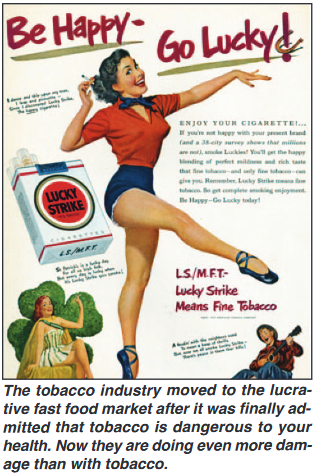 “Imagine walking down the grocery store aisle, reaching for your favorite snack or convenience meal. Now, picture the same scene, but with an unexpected twist: the masterminds behind those tempting, perfectly engineered flavors aren’t food scientists, but tobacco executives. It sounds like the plot of a far-fetched conspiracy theory, doesn’t it? Yet, a study from the University of Kansas suggests this scene isn’t just plausible — it’s really what happened. For decades, we’ve known about Big Tobacco’s insidious tactics to hook smokers. But what if those same strategies were applied to the food on your plate?
“Imagine walking down the grocery store aisle, reaching for your favorite snack or convenience meal. Now, picture the same scene, but with an unexpected twist: the masterminds behind those tempting, perfectly engineered flavors aren’t food scientists, but tobacco executives. It sounds like the plot of a far-fetched conspiracy theory, doesn’t it? Yet, a study from the University of Kansas suggests this scene isn’t just plausible — it’s really what happened. For decades, we’ve known about Big Tobacco’s insidious tactics to hook smokers. But what if those same strategies were applied to the food on your plate?
“The research reveals a startling connection between tobacco giants and the processed food industry that dominated American eating habits for over two decades. From the late 1980s to the early 2000s, tobacco companies like Philip Morris and R.J. Reynolds weren’t just selling cigarettes — they were quietly shaping the very landscape of the U.S. food system. As you read on, prepare to have your perspective on processed food forever altered.
“The story that unfolds is one of corporate strategy, scientific manipulation, and calculated effort to make certain foods irresistible — even addictive. You may think Big Tobacco and Big Food are separate industries, but the University of Kansas study, published in the journal Addiction, reveals how deeply intertwined they were for decades. The researchers found that tobacco giants Philip Morris and R.J. Reynolds strategically acquired major food companies in the 1980s, dominating the U.S. food system for over 20 years. During this time, they deliberately formulated and promoted ‘hyper-palatable’ processed foods designed to maximize consumption and profits — much like they did with cigarettes. The study examined food products from 1988 to 2001, when tobacco companies led the food industry.
“Foods owned by tobacco companies were 29% more likely to be classified as ‘fat and sodium hyper-palatable’ and 80% more likely to be ‘carbohydrate and sodium hyper-palatable’ compared to foods not owned by tobacco companies. Recognize that the primary reason this was so destructive to your biology was that they use the wrong fats. If they had used saturated fats, which were vilified at the time, instead of the exalted but pernicious mitochondrial poisons, polyunsaturated fatty acids or PUFAs, we would be in good shape from a health perspective. But these hyper-palatable foods were engineered with specific combinations of pernicious omega-6 fats and additives that don’t occur in nature. They excessively activate brain reward circuits, facilitating overconsumption and leading to addictive-like eating behaviors.
“When you walk down the supermarket aisles today, you’re seeing the long-term consequences of Big Tobacco’s foray into food. The study found that as of 2018, over 75% of branded food products qualify as hyper-palatable, regardless of previous tobacco company ownership.
“However, foods that were once tobacco-owned still showed a slightly higher prevalence of being classified as omega-6 linoleic acid-loaded fat and artificial ingredient hyper-palatable. This suggests that tobacco companies’ strategies for formulating hyper-palatable foods have influenced the broader food industry. Other food companies likely observed the market success of tobacco-owned brands and began producing similar hyper-palatable products to remain competitive. It’s a stark reminder of how corporate strategies in one industry have far-reaching effects on public health through unexpected channels.”
The culpability of companies that specialize in ultra-processed foods is even being targeted in court as of late. Here is a review of that case (A. Danney, Ultra-processed food companies face legal scrutiny for targeting children, The Epoch Times, December 17, 2024, www.theepochtimes.com):
“A Pennsylvania teen who developed Type 2 diabetes and fatty liver disease by age 16 is suing the companies that made the food he’s grown up eating, claiming the companies intentionally develop addictive food and market it to children. The lawsuit, filed on behalf of Bryce Martinez by Morgan & Morgan, alleges that companies including Craft Heinz, Coca-Cola, Nestle, Mars, PepsiCo, and others strategically deigned research around the brain’s positive response to chemicals to make their products addictive. It accuses the companies of using the same techniques as tobacco companies.
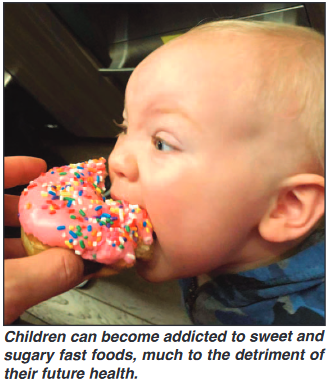 “Ultra-processed foods (UPF) are the result of companies that value profits over people, health, and safety, said Morgan & Morgan partner Mike Morgan in a news release shared with The Epoch Times. ‘The consequences of these companies’ alleged actions have allegedly harmed thousands of children and families,’ he said. ‘Executives at the defendant companies have allegedly known for at least a quarter-century that ultra-processed foods would contribute to illnesses in children, but these companies allegedly ignored the public health risks in pursuit of profits.’”
“Ultra-processed foods (UPF) are the result of companies that value profits over people, health, and safety, said Morgan & Morgan partner Mike Morgan in a news release shared with The Epoch Times. ‘The consequences of these companies’ alleged actions have allegedly harmed thousands of children and families,’ he said. ‘Executives at the defendant companies have allegedly known for at least a quarter-century that ultra-processed foods would contribute to illnesses in children, but these companies allegedly ignored the public health risks in pursuit of profits.’”
The documentary The Babies Addicted to Fast Food reveals an emerging crisis of fast-food addiction in young children, and is well worth viewing. Go to www.youtube.com/watch?v=SjQbIf6nlnI for an eye-opening view of this remarkable video. The video reveals how early fast-food addiction leads to short-term health issues like tooth decay, anemia, and rickets, while setting children up for future chronic diseases and mental health problems. Research has shown that there are strong links between ultra-processed food consumption and increased risks of cardiovascular disease, Type 2 diabetes, anxiety, depression, and other serious health conditions. The video also gives practical tips for healthier eating, such as making gradual dietary changes towards a healthful diet, involving children in meal preparation, and joining support groups to help families transition away from fast-food dependency. Parents need to break the fast-food cycle and utterly avoid ultra-processed foods while prioritizing home-cooked meals. The addiction of little children to processed foods is a crisis that cannot be taken lightly, since they will be the next generation to populate the earth.
To Add Further Addiction …
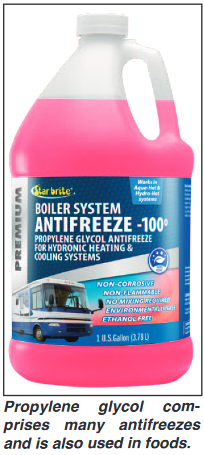 While refined sugar, fat, and white flour products are drug-like enough to give us pause while selecting the foods we eat, let us examine a few of the other ingredients commonly added to foods that can also act like drugs. Here are a few of the many chemicals in fast foods (The secret chemicals in fast food and what they’re doing to you, www.well.org/nutrition).
While refined sugar, fat, and white flour products are drug-like enough to give us pause while selecting the foods we eat, let us examine a few of the other ingredients commonly added to foods that can also act like drugs. Here are a few of the many chemicals in fast foods (The secret chemicals in fast food and what they’re doing to you, www.well.org/nutrition).
Propylene Glycol. This synthetic liquid chemical is used in industrial solvents, antifreeze, deodorant, and lubricants. In the fast food industry it is used to make spice concentrates, food colorings, and flavorings, and in various food applications as an anti-caking agent, antioxidant, carrier, dough strengthener, emulsifier, moisture preserver, processing aid, stabilizer, thickener, and texturizer. It is also found in drink mixes, dressings, dried soups, cake mixes, soft drinks, popcorn, bread, and dairy products. In some cases it is injected into the body. While the toxicity of propylene glycol is low, it can cause liver and kidney damage in some people with impaired organ function. The feedstock material is corn.
Caramel coloring (with 2 and 4-methylimidazole). This dye, of which there are four types, is produced by reacting sugars, ammonium compounds, and sulfites. These coloring agents are found in most sodas, brown bread, chocolate, cough drops, vinegars, custards, fillings, doughnuts, gravy browning, and many other products. The risks of consuming these dyes include high blood pressure and various types of cancer.
Silicon dioxide. This compound is the same one as found in sand, but as a colloidal or very finely ground substance it is used as a food additive. It can be used as an anti-caking agent, a carrier, and a stabilizer in foods to extend shelf life. Though generally considered safe in foods, recent studies have shown that it can damage the gut lining and contribute to gastrointestinal immune-mediated diseases.
Cellulose. This finely-ground sawdust replaces more expensive thickening agents like flour or oil. Though plant-based and non-digestible, it occupies volume in the food while contributing no nutritional value, thus creating an even more foodless food.
TBHQ (tertiary butylhydroquinone). This food additive is derived from petroleum. Its production begins with the oxidation of p-cresol, which is used in the production of disinfectants, pesticides, and herbicides. Sulfuric acid is added in this process. Then isobutylene with sulfuric or hydrochloric acid are added to synthesize the TBHQ, which is then purified to be used in food products. This chemical essentially acts as a biocide, extending shelf-life as it slows oxidation, and thus rancidity. It is commonly added to breakfast cereals, processed meats, fast food items, cooking oils, processed nuts, and baked goods. The health issues with TBHQ are many: cancer, vision disturbances, liver enlargement, neurotoxic effects, convulsions, and paralysis, besides triggering ADHD (hyperactivity).
Dimethylpolysiloxane. This silicone polymer food additive is a surfactant and antifoaming agent, an additive to hydraulic fluids, and is used in solar panels, soft lithology, stereo lithography, medicine and cosmetics, breast implants, hair conditioners, and Silly Putty. Because it is non-biodegradable it is a good food preservative. Fast food restaurants add it to their deep fryers to prevent foaming so they can change the oil less often, which allows more toxic free radical compounds to accumulate in the oil. This additive is known to damage the eyes and respiratory system, and brings on bouts of acne.
Sodium acid pyrophosphate. This chemical is used to aid in leavening bread products, enhances the flavor and color of sausage, and prevents the discoloration of potatoes and sugar syrups. It also acts as a preservative, and will fluff up foods that would otherwise mold, dry out, blacken, or stiffen. It is also used in laxatives. Because of its high phosphorus content it can lead to osteoporosis by increasing the body’s calcium requirement. It can compromise the immune system and contribute to vision problems, cardiovascular disease, dehydration, electrolyte imbalance in the blood, and tooth decay.
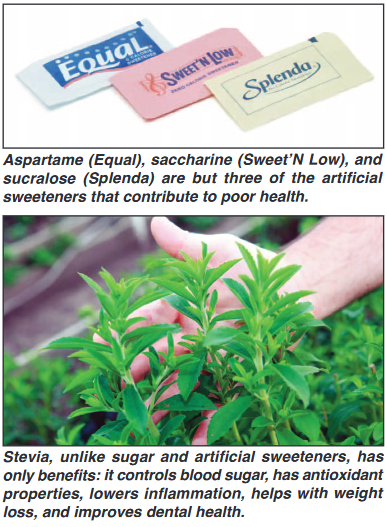 These common ingredients in fast foods are not the only ones added, but suffice it to say that the major additives are fat, sugars, sodium, and refined carbohydrates. There are many other additives to food, to enhance flavor and color, longevity, and promote addiction. After all, it is the goal of the food scientists, behavioral psychologists, and other professionals who are employed by Taco Bell, McDonalds, Kentucky Fried Chicken, and other fast food giants to get people hooked on their offerings so they will return and boost their sales. Health of their clients is not a concern, even if addictive “drugs” — masquerading as good food — are added that will harm their health. “The love of money is the root of all sort of evil” (I Timothy 6:10).
These common ingredients in fast foods are not the only ones added, but suffice it to say that the major additives are fat, sugars, sodium, and refined carbohydrates. There are many other additives to food, to enhance flavor and color, longevity, and promote addiction. After all, it is the goal of the food scientists, behavioral psychologists, and other professionals who are employed by Taco Bell, McDonalds, Kentucky Fried Chicken, and other fast food giants to get people hooked on their offerings so they will return and boost their sales. Health of their clients is not a concern, even if addictive “drugs” — masquerading as good food — are added that will harm their health. “The love of money is the root of all sort of evil” (I Timothy 6:10).
Are some of these additives actually addictive drugs? Coca-Cola initially was formulated using coca leaves and kola nuts, which are processed to obtain the addictive drugs cocaine and caffeine. They still may add these ingredients, since the formula of Coca-Cola even to the present day remains a secret (Coca-Cola, www.wikipedia.org). How many other foods marketed around the world, especially in fast food establishments, might add addictive drugs?
What about artificial sweeteners? These include Avantame, aspartame (Nutra Sweet, Equal), neotame, saccharine (Sweet’ N Low), sucralose (Splenda), stevia extracts, and sugar alcohols such as xylitol and erythritol. While stevia is a natural product, the others are chemically synthesized. All but stevia have been shown to cause serious health issues. What these artificial sweeteners do is to cause addiction (This is why artificial sweeteners are bad for you, Cleveland Clinic Health Essentials, April 20, 2023, www.health.clevelandclinic.org):
“‘Artificial sweeteners give you that sweet taste your body is wired to crave. The issue is that artificial sweeteners can be up to 700 times sweeter than sugar. The result is that they completely bombard your nervous system with that dopamine-releasing sweetness. If eating sugar sets off a firework in your brain, artificial sweeteners light up your system like closing time at Disney World. Confetti is flying. The music is blasting. Love is in the air.
“‘But soon, the excitement quiets down and your brain wants that feeling back. So, you reach for more artificially sweetened foods. And you don’t worry about it all that much because — hey, it’s low-calorie, right? When you’re consuming artificial sweeteners, your body starts to crave more of it. And it can be easier to give in to that craving because you think you’re making a healthier choice,’ Dr. Young explains. ‘You wind up consuming more calories. That mindset and that sweetness addiction lead to effects throughout your body.’”
These artificial sweeteners are excitotoxins that act just like drugs do to the addict — setting off a dopamine release to set off excitement in the body, just like sugar does, but requiring much, much less of the chemical. They cause bloating, cramps, pain, and diarrhea, and increase the risk of heart attack and stroke. Artificial sweeteners in general are linked to obesity, hypertension, metabolic syndrome, Type 2 diabetes, and heart disease.
Aspartame, often found in diet soda, light yogurt, sugar-free desserts, and many other foods has been shown to cause obesity, diabetes, early menstruation, mood disorders, mental stress, depression, and autism of children whose mothers used it during pregnancy (Cleveland Clinic Health Essentials, 2023).
There are many other common food additives that one can read on supermarket food labels. These include artificial coloring, high fructose corn syrup, hydrogenated oils, monosodium glutamate (MSG, Hamburger Helper), carrageenan, processed oils, sodium benzoate, sodium nitrate, citric acid, gums, lecithin, and others. Some of these may be addictive, but in all cases they add to the toxic load that the body must eliminate to maintain health.
Alcohol
Another substance that might be classified as a drug is alcohol. It can possibly fit a part of the definition of a drug in that it “affects a body organ or function,” but then so does every food a person eats. We will discuss alcohol because it is so often abused and used in excess so that it does become addictive. We call that addiction alcoholism.
We must first make a distinction between alcoholic beverages that are naturally fermented — primarily beer and wine — from those that are distilled from a fermented carbohydrate source, such as whiskey, vodka, brandy, sherry, tequila, or other concentrated alcohol drinks. Further, we should differentiate between beer and wine that are produce naturally versus those that are commercially produced.
First, let us examine the use of wine and beer by Israel during Old and New Testament times. The word wine is used 233 times in Scripture, in the Hebrew as yayin [wine (as fermented)], and in the Greek as oinos [wine (literally or figuratively)]. This word definitely means fermented grape juice, not the unfermented juice itself.
Scripture and archaeological evidence indicate that wine was the principle beverage of ancient Israel. This may come as a shock to some, but the Scriptures verify this fact. In Numbers 13 Moses sent 12 spies into Canaan to survey the land, and they returned with a huge grape cluster too heavy for one man to carry. According to the ancient Egyptian tale of Sinuhe, Israel had more wine than water, and excavations at the pre-Israelite site of Tel-Kabri unearthed 40 large wine vessels (a volume of 3,000 modern bottles). Many winepresses of various types have been found throughout the land (E. Goodfriend, Wine was the principle beverage of ancient Israel, Bible Odyssey, Society of Bible Literature, 2024, www.bibleodyssey.org).
Though Israel had seasonal rainfall and an unsure water supply, it did have water wells. Even so, the nation relied on wine as the chief beverage throughout its history. The weather, latitude, and geology of the country all favored grape growing. Milk of goats and cattle was used in some cases, but it spoiled quickly, whereas wine could last indefinitely. Beer, produced from barley, is likely the meaning of the Hebrew shekar, and it and wine are often mentioned together.
Even children drank wine in Israel, according to Lamentations 2:12: following the destruction of Jerusalem they asked, “… where are our bread and wine?” Wine was an essential complement to feasts and other joyous occasions, for it was produced in large quantities and did not spoil. When Abram and Melchizedek met after the defeat of Chedorlaomer and the kings with him, “Then Melchizedek king of Salem brought out bread and wine …” (Genesis 14:18).
 Wine “gladdens the human heart” (Psalm 104:15), and even our heavenly Father is cheered by this delightful beverage (Judges 9:13. In fact, the Hebrew noun feast [mishteh] comes from the verb for drinking [wine or beer]. “A feast is made for laughter, and wine makes merry …” (Ecclesiastes 10:19). Recall the wedding feast in Cana when Jesus turned the water into wine … a most joyous occasion (John 2:1-10). During this event the master of the feast indicated that there are various grades of wine — good and inferior — and normally the good wine is served first and the inferior wine last when the guests are a bit inebriated and will not care much about wine quality. During the animal sacrifices, wine was poured out in the Tabernacle, and later at the temple in Jerusalem. As Numbers 28:7 states, for each lamb offered for the daily sacrifice, a hin of wine (about a quart) was poured out.
Wine “gladdens the human heart” (Psalm 104:15), and even our heavenly Father is cheered by this delightful beverage (Judges 9:13. In fact, the Hebrew noun feast [mishteh] comes from the verb for drinking [wine or beer]. “A feast is made for laughter, and wine makes merry …” (Ecclesiastes 10:19). Recall the wedding feast in Cana when Jesus turned the water into wine … a most joyous occasion (John 2:1-10). During this event the master of the feast indicated that there are various grades of wine — good and inferior — and normally the good wine is served first and the inferior wine last when the guests are a bit inebriated and will not care much about wine quality. During the animal sacrifices, wine was poured out in the Tabernacle, and later at the temple in Jerusalem. As Numbers 28:7 states, for each lamb offered for the daily sacrifice, a hin of wine (about a quart) was poured out.
We know that not everyone drank wine in ancient Israel. The priests when performing their duties in the sanctuary were forbidden from drinking alcohol (Leviticus 10:9), and Nazarites drank no such drinks at all. Included in this group of non-drinkers were the Rechabites (Jeremiah 35:6-7).
We also know of the several admonitions in Scripture to avoid excessive use of alcoholic drinks and drunkenness. Noah planted a vineyard after the Flood, drank of the wine, and got drunk and was uncovered (Genesis 9:20-27). Lot and two of his daughters escaped the destruction of Sodom, but the two young ladies sexually violated Lot while he was drunk and bore his children (Genesis 19:30-38). Solomon in Proverbs associates an excess of wine with brawling and foolishness (Proverbs 20:1), mental confusion (Proverbs 23:29-35), and forgetting one’s obligations and misery (Proverbs 31:1-7).
Beer was also consumed in ancient Israel, as evidenced by beer jugs uncovered in archaeological digs. Alcohol helps preserve food when there is no refrigeration, and has antibacterial qualities besides giving pleasant consequences for the users. Unlike wine that can last for years, and improve with age, beer was produced for immediate consumption. It required, however, ample water which the Israelites had relatively little of much of the year, so beer was more common in water-rich areas like Egypt and Mesopotamia.
Because barley, a major component of beer, was less expensive than wheat and could grow better on more difficult terrain than wheat, it has been suggested that brewing beer was the major motivation for domesticating barley. It was made by soaking the grains in water to sprout them, drying them, and forming loaves which were baked. These were then soaked in water and fermented. Women apparently did most of the beer-making, as it is associated with bread-making.
Beer is considered to be the shekar mentioned in Leviticus 10:9 (“… wine or intoxicating drink …”), and in II Samuel 1:15 (“I have drunk neither wine nor intoxicating drink …”), as being distinct from wine. Beer perhaps did not excite the literary writings of the Israelites as much as did wine; barley was also fed to livestock, and was made by women (E. Goodfriend, Beer in ancient Israel, Bible Odyssey, Society of Bible Literature, 2024, www.bible odyssey.org).
Healthful Benefits of Wine and Beer
While some modern scientists advise against drinking wine or beer, the benefits have been documented in scientific journals for decades, a few of which are mentioned here (M. Frey, Red wine nutrition facts and health benefits, Very Well Fit, June 28, 2024, www.bible odyssey.org):
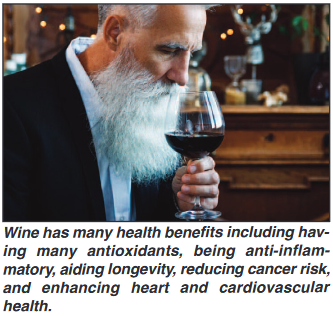 1. Improves heart health, in part from resveratrol in red wines
1. Improves heart health, in part from resveratrol in red wines
2. May curb Type 2 diabetes, especially with a Mediterranean diet and a glass of wine a day
3. May improve mental health, especially for depression
4. Promotes longevity, at one to two glasses a day alongside a Mediterranean diet
5. Reduces cognitive decline, especially with the wine combined with cheese and lamb
These benefits must relate in part to the nutritional components of wine. Red wine contains, in a 5 ounce serving of a 10.6% alcohol variety, significant amounts of micronutrients, in particular iron, zinc, copper, manganese, selenium, and fluorine, as well as calcium, magnesium, potassium, and phosphorus. The vitamin spectrum is quite profound, and includes several B vitamins, choline, and folic acid (Red wine nutrition facts, My Food Data, www.myfooddata.com). White wine has somewhat lower amounts of these nutrients.
Beer in a one-can serving of a 3.9% alcohol content contains significant amounts of macro and micronutrients: copper, manganese, selenium, fluorine, calcium, magnesium, potassium, and phosphorus. The vitamin profile is quite impressive, showing high levels of B vitamins — especially B2, B3, B5, and B12 — as well as high levels of folic acid and choline (Beer nutrition facts, My Food Data, www.myfooddata.com).
The Toxins in Alcoholic Drinks
Given the health benefits of naturally produced wine and beer, it is a sad testimony to view the toxic compounds that are introduced into them by modern industrial wineries and breweries. Below is a list of some of these additives (The hidden dangers of chemical contaminants in alcoholic beverages, August 7, 2024, www.sandiegobeer.news; K Kumar, Sulfites in wine: user and side effects, www.medicinenet.com; A. Patel, Wine additives guide: the 9 most common chemicals and additives in your wine, January 13 2022, www.drinktinto.com; B Flourney, How to test if alcohol has methanol, March 24, 2022, www.sciencing.com; Chemical composition of alcoholic beverages, additives, and contaminants, National Library of Medicine, I. D. NBK531662, 1988, www.ncbi.nim.nih.gov; M. Lipske, Chemical Additives in Booze, Center for Science in the Public Interest, CSPI Books, Washington, D.C., 1982, archive.org/details/chemicaladditive0000unse):
1. Heavy metals, especially lead, cadmium, and mercury. These can produce kidney, liver, and cardiovascular problems, as well as cognitive impairment. Tainted water or metals in the equipment, especially during distillation, will add to their presence.
2. Pesticide residues. Herbicides, miticides, insecticides, and other pesticides are routinely used to control fungi and pests in grapes, barley and wheat, and hops, and will contaminate wine and beer.
3. Mycotoxins. These are produced by certain molds that grow on barley, wheat, or grapes. They are heat-resistant and survive the brewing and distillation processes and pose significant health risks, especially when raw materials are allowed to mold.
4. Ethylcarbamate (urethane). This compound forms during fermentation and aging, and is a human carcinogen. It can be minimized by proper fermentation and aging processes.
5. Phthales. Phthalates are found in plastics, which can leach into wine and beer from plastic containers. Thus, if manufacturers are not careful these compounds can enter the wine or beer during bottling, storage, or transport. Phthalates are well-known endocrine disrupters, and affect reproduction and development.
6. Sulfites. Sulfur dioxide is added to wines before and after fermentation of most commercial wines to preserve them, i.e., stop bacterial growth. Winemakers in the U.S. can use up to 350 ppm of sulfites. These compounds are also in natural wines, but at low levels. They can cause asthma, sulfite allergy, headaches, and death due to anaphylactic shock.
7. Mega purple. This highly-pigmented juice concentrate intensifies the color of wine, and has no negative side effects.
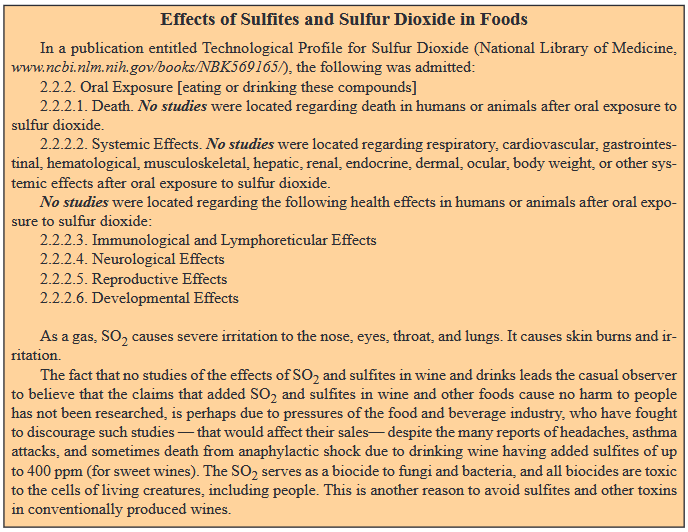
8. Velcorin. Velcorin (dimethyl decarbonate) is added to wine to sterilize it. Workers adding it must wear hazmat suits due to its high toxicity; if enough is inhaled or contacts the skin or eyes, death can quickly occur. The chemical supposedly breaks down to non-lethal products within 24 hours.
9. Animal products. One such product is isinglass, gelatin derived from the dried swim bladder of fish. It is used to clarify wine — the gelatin clings to particles and settles out — and is also used to filter beer. Egg whites are also sometimes used. It can cause allergic reactions, and is not required to be listed on labels.
10. Tartaric and amino acids. These additives are for taste and to speed the fermentation, and are considered harmless to people.
11. Methanol. Methanol is produced at low levels during fermentation, but is highly toxic. In the body it is converted to formic acid that can cause liver damage, circulation problems, nerve damage, kidney failure, and blindness. Commercial producers have ways to remove methanol, but producers of “moonshine,” for example, will have significant methanol levels in their beverages, as will home distillery operations.
12. Sorbic acid. This acid kills bacteria and molds in wine.
13. Food dyes. A number of coloring agents are added to alcoholic beverages, especially distilled types.
Nearly all of these toxins are carcinogenic and can cause damage to the body. Thus we see that most commercial wine and beer brands, except organic varieties, are tainted with toxic chemicals to one degree or another. Wine and beer drunk by the ancient Israelites had none of these toxic additives, but the nation thrived while consuming high levels of these alcoholic drinks.
How, then, can the highly respected Dr. Joseph Mercola justify saying that drinking alcohol at any level is harmful? In a September 14, 2024, article entitled, “What does the science say about alcohol consumption?,” Mercola claims that even light drinkers may be at risk of premature death. His summary of the article is as follows:
• Alcohol consumption, even at low levels, can negatively impact brain structure, reducing overall brain volume and affecting gray and white matter integrity.
• Ethanol in alcoholic drinks is converted to acetaldehyde, a toxic substance that damages cells indiscriminately, leading to various health issues including increased cancer risk.
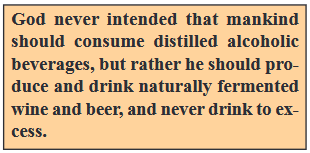 • Alcohol disrupts gut health by killing beneficial bacteria, potentially causing leaky gut syndrome and triggering inflammatory responses that affect your liver and brain.
• Alcohol disrupts gut health by killing beneficial bacteria, potentially causing leaky gut syndrome and triggering inflammatory responses that affect your liver and brain.
• Regular alcohol consumption can alter hormonal balance, increasing estrogen levels and potentially raising cancer risk, especially for breast cancer.
• While N-acetylcysteine (NAC) supplementation may help mitigate some harmful effects of alcohol, abstaining completely is the safest option for optimal health.
The answer lies in the quality of the wine and beer produced today through commercial production of those historically staple and healthful drinks. The high quality, nutritionally-rich wine and beer of ancient Israel, and of much home-based and organically certified production, was not researched in the scientific studies reported by Mercola in his article. Had he found studies that looked into the health benefits of pure, untainted wine and beer he would have come to very different conclusions. Modern, corporate, profits-come-first wine and beer production make these drinks a polluted and unhealthy addition to the fast food industry’s fare, which has already been discussed at length.
We must also never forget that GOD NEVER INTENDED THAT WINE OR OTHER ALCOHOLIC DRINKS BE DISTILLED. These beverages are not included in Biblical writings and were never intended to be drunk by mankind. Only naturally fermented wine and beer are suitable for human consumption: distilled and concentrated forms of these drinks are poison to the body.
God’s Word Speaks Out
The word of God is not one bit silent about the use of drugs, especially the addiction to them or the use of those that impair judgment: the ability to discern right from wrong, good from evil. We know well the words of Isaiah:
“Woe to those who call evil good, and good evil; who put darkness for light, and light for darkness; who put bitter for sweet, and sweet for bitter!” (Isaiah 5:20).
Jesus Christ emphasized the incredible importance of the “… weightier matters of the law: justice and mercy and faith” (Matthew 23:23). Anything that interferes with proper judgment is decried by our Creator. It is optimum health that grants proper judgment, not the taking of drugs or foodless foods, or anything that interferes with the unhampered functioning of the spirit of God within us. The body is the temple of the holy spirit; we do not even own our own bodies, but this wonderful biological-spiritual-intelligent organism belongs to the Creator! (I Corinthians 3:16-17; 6:19-20).
Let us read what God’s word has to say directly about drug usage. To do so we must carefully examine the Greek word pharmakia, pharmakos, and epano, plus other words that relate to drugs and drug use. There are 37 references to drug use and drug users in Scripture: 32 in the Old Testament and five in the New Testament. By using the Septuagint — the Greek translation of the Old Testament — it is possible to discover truth about drug usage going clear back to ancient Israel.
Pharmakia, “the use of medicine, drugs, or spells; then poisoning; then sorcery. In sorcery, the use of drugs was usually accompanied by incantations and appeals to occult powers, with the provision of various charms, amulets, etc.” Depending on the context, the word can refer to the use of drugs as a medicine, their use in spells, in poisoning someone, or in sorcery. See its use in Exodus 7:11-22; 8:7, 18; II Kings 9:22; Psalm 58:5; Isaiah 47:9, 12; Micah 5:12; Nahum 3:4; Galatians 5:20; Revelation 9:21; 18:23.
Pharmakos, “an adjective that signifies ‘devoted to magic arts’; as a noun it refers to a sorcerer, especially one who uses drugs, potions, spells, and enchantments.” Its use can be found in Exodus 7:11; 9:11; 22:18; Deuteronomy 18:10; II Chronicles 33:6; Psalm 58:5; Jeremiah 27:9; Daniel 2:2; Malachi 3:5; Revelation 21:8; 22:15.
Epano, “similar to ‘magician,’ and is sometimes used for one that uses drugs, depending on the context.” This word can be found used in Exodus 7:11, 22; 8:7, 18, 19; Daniel 1:20; 2:10, 27; 4:7, 9,: 5:11.
We read of the “wise men and sorcerers and magicians” of Egypt turning rods into serpents, the Nile River water into blood … of Jezebel’s “witchcraft,” of the wicked “charmers” in Psalms, of the “sorceries and enchantments” of the Chaldeans, and on the list of Biblical references goes. What is especially poignant for today’s world are the New Testament references to pharmakia in Galatians 5:20, where sorcery is listed as one of the works of the flesh, and in Revelation:
“And they [the rest of mankind that survived the three woes, and did not repent of their idol worship] did not repent of their murders or their sorceries [translated ‘drugs’ in the Nu-Text and M-Text] or their sexual immorality or their thefts” (Revelation 9:21).
 “The light of a lamp shall not shine in you anymore, and the voice of bridegroom and bride shall not be heard in you anymore. For your merchants were the great men of the earth, for by your sorcery [pharmakia] all the nations were deceived” (Revelation 18:23).
“The light of a lamp shall not shine in you anymore, and the voice of bridegroom and bride shall not be heard in you anymore. For your merchants were the great men of the earth, for by your sorcery [pharmakia] all the nations were deceived” (Revelation 18:23).
“He who overcomes shall inherit all things, and I will be his God, and he shall be My son. But the cowardly, unbelieving, abominable, murderers, sexually immoral, sorcerers [pharmakos], idolaters, and all liars shall have their part in the lake which burns with fire and brimstone, which is the second death” (Revelation 21:7-8).
“Blessed are those who do His commandments, that they may have the right to the tree of life, and may enter through the gates into the city. But outside are dogs and sorcerers [pharmakos] and sexually immoral and murderers and idolaters, and whoever loves and practices a lie” (Revelation 22:14-15).
It is abundantly clear from these Scriptures that being involved with drug usage, either as an addict or even an occasional user, or as a pusher of drugs on others — is very serious. Unless repented of, one’s fate is the lake of fire (Revelation 21:8), or eternal death. Involvement with drugs is not to be taken lightly … and, as has been shown in this study, that includes addictions to mind-altering, body-destroying refined sugars, fast foods, and food additives. Where our Creator draws the line on who is addicted and who is not — for many brethren I know do indulge in these addictive, foodless foods from time-to-time, even habitually — is His decision and not mine. However, does it not make sense that a called and chosen son of His should stay far away from these substances that pollute the temple of God, which our body is?
I have shown in this study the need for God’s people to stay free of drug usage of any sort. These drugs include well-known ones like heroin, cocaine, amphetamines, opioids, tobacco, refined sugar, high fructose corn syrup, artificial sweeteners, and various food contaminants placed in foods to extend shelf life and thus increase corporate profits … and to addict people to their offerings so they will be return customers and further swell company income.
I have further shown that alcohol, while it can become addictive if misused and overindulged in, is in reality a healthful drink if it is produced naturally, as in untainted wines and beers. I have shown that ancient Israelites drank both wine and beer — especially wine — to a great degree, and our heavenly Father extols the virtues of it (Judges 9:13). The Scriptures clearly emphasize that wine or beer are not to be drunk in excess, but rather moderation must be exercised or the health benefits of them will be reversed; note Proverbs 23:29-35 (the fate of those who “linger long at the wine”), Proverbs 20:1 (wine in excess is a “mocker”), Proverbs 21:17 (loving wine and oil, or luxury, will not prosper a person), Ephesians 5:18 (do not get drunk with wine, but be filled with Spirit), I Corinthians 6:10 (drunkards will not inherit the kingdom of God), Galatians 5:21 (drunkenness is a fruit of the flesh), Romans 13:13 (do not walk in drunkenness), I Corinthians 5:11 (do not associate with drunkards), Titus 2:3 (let not the older women be slaves to much wine), Isaiah 5:11 (woe to those who run after strong drink), Isaiah 28:1-7 (the leaders, priests, and prophets of Israel reel with much wine), Hosea 4:11 (wine takes away understanding), and many other Scriptures.
Note these important facts:
• Jesus drank wine, and was even called a “winebibber” (Luke 7:33-34).
• Jesus turned water into wine at the wedding feast at Cana; He would not have done so if wine was a prohibited drink (John 2:11).
• The symbol of wine is used to typify Christ’s shed blood during the Passover (Matthew 26:27-29; Mark 14:23-25; Luke 22:16-17; I Corinthians 11:25-26).
 • A lack of wine was associated with a curse, as when Israel was warned that if they failed to follow God’s commandments they would lose their “grain, wine, and oil” to drought and enemy invasions (Deuteronomy 28:30, 39, 51). Wine was put on a par with the dietary staples of grain and oil.
• A lack of wine was associated with a curse, as when Israel was warned that if they failed to follow God’s commandments they would lose their “grain, wine, and oil” to drought and enemy invasions (Deuteronomy 28:30, 39, 51). Wine was put on a par with the dietary staples of grain and oil.
• Jesus used wine as a metaphor for the new life of the disciples in God’s calling (new wine in new wineskins), versus putting that new wine into the “old wineskins” of the Pharisaical traditions (Matthew 9:17).
• Yahweh described the promised land of Canaan as a “land of grain and new wine” (Deuteronomy 33:28), showing wine’s value as a staple in the Israelites’ diet.
• Isaac blessed Jacob with the promise of “… the dew of heaven, of the fatness of the earth, and plenty of grain and wine” (Genesis 27:28), again showing how wine was considered an integral part of the Middle Eastern diet.
• The best of the new wine and grain — their firstfruits offered to Yahweh — were to be given to the Aaronic priesthood (Numbers 18:12).
• The grain, wine, and oil, and the increase of cattle and people, were promised to Israel for obedience to God (Deuteronomy 7:12-14; 11:13-15).
Even in the coming age wine will be a part of everyone’s lifestyle! This is alluded to in Isaiah and Joel:
“And in this mountain the Lord of hosts will make for all people a feast of choice pieces, a feast of wines on the lees, of fat things full of marrow, of well-refined wines on the lees” (Isaiah 25:6).
“And it will come to pass in that day that the mountains shall drip with new wine, the hills shall flow with milk, and the brooks of Judah shall be flooded with water; a fountain shall flow from the house of the Lord and water the Valley of Acacias” (Joel 3:18).
Even Jesus Christ has promised He will drink wine in the Kingdom with all of us, His disciples. To Jesus and to us, wine is a magnificent blessing if it is naturally fermented, not polluted with toxic chemicals as most of it is today. And remember that Jesus and the ancient Israelites did not drink distilled beverages that concentrated the alcohol to high levels such as in whiskey, brandy, or vodka. Those beverages are toxic to the human body and should be avoided.
A Final Word
Drugs are a major topic of Biblical conversation. We need to heed the words given for our admonition so we might prosper under these directives and live healthful, abundant lives in obedience to our Creator.
We need to especially understand how drugs affect our spiritual lives, knowing that our being is a unified boy-mind-spirit (I Thessalonians 5:23); affecting one part affects the entire being. Addiction to drugs — just as addictions to self-aggrandizement, sex, or money — is idolatry: placing anything ahead of the one true God, which breaks the first commandment. Our addiction must be to the spirit-led life that leads to a steady consumption of God’s word, praying without ceasing, meditating regularly, fasting on occasion, and fellowshipping with the elect. Those are the addictions we must hold dear.
Addictions to drugs, wine, sugar, fast foods, or anything physical conflict with the spirit-led life. They pervert judgment, mercy, and faith, and lead us towards satisfying the lusts of the flesh instead of the fruits of the spirit: love, joy, peace, patience, kindness, goodness, faithfulness, gentleness, self-control, and humility.
What are some pivotal points we can conclude from this study about drugs?
1. Drugs as defined in God’s word should be strictly avoided. This includes what we term “street” or “illegal” drugs like cocaine, amphetamines, heroin, fentanyl, various opioids, or any number of other compounds. It also includes prescription drugs, many of which can be addictive and universally produce side effects which are usually harmful to the mind and body, or can kill you. Drugs, after all, mostly mask symptoms of a disease rather than treat and remove the root cause of the malady. One is reminded of the woman who had an issue of blood for 12 years, “… who had spent all of her livelihood on physicians and could not be healed by any” (Luke 8:43). Things were little different in Jesus’ day than they are today. Drugs and excess alcohol also cloud proper judgment and decision making. Some have said that medical doctors are the biggest drug pushers on earth; their instruction in medical school focuses on the use of drugs, and these toxic chemicals are a major cog of the medical establishment’s arsenal: drugs, surgery, and radiation.
2. God’s people should focus on the use of herbs and natural foods for healing. As Revelation 22:2 states, “The leaves of the tree [of life] were for the healing of the nation.” When King Hezekiah was sick and near death, Yahweh through Isaiah told the king — after his concerted prayer for healing — to place some figs on the boil. 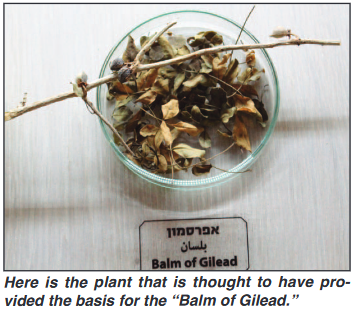 Hezekiah then recovered (II Kings 20:1-7). Balm [tsriy], along with spices, myrrh, and other agents, are mentioned in Scripture as healing agents, not chemical drugs as medical doctors use today:
Hezekiah then recovered (II Kings 20:1-7). Balm [tsriy], along with spices, myrrh, and other agents, are mentioned in Scripture as healing agents, not chemical drugs as medical doctors use today:
“Is there no balm in Gilead, is there no physician there? Why then is there no recovery for the health of the daughter of My people?” (Jeremiah 8:22).
“Go up to Gilead and take balm, O virgin, the daughter of Egypt; in vain you will use many medicines; you shall not be cured” (Jeremiah 46:11).
“Babylon has suddenly fallen and been destroyed. Wail for her! Take balm for her pain; perhaps she may be healed” (Jeremiah 51:8).
There are many books available that cover the use of plants and herbs for treating diseases and various health issues. I have listed below a few from my own library that you may find useful.
W. Lewis, Medical Botany: Plants Affecting Man’s Health, John Wiley and Sons, New York, 1977.
J. Kloss, Back to Eden, Back to Eden Books Publishing Company, Loma Linda, California, 1939.
Editors of FC&A Medical Publishing, Natural Cures and Gentle Medicines That Work Better Than Dangerous Drugs or Risky Surgery, FC&A Medical Publishing, Peachtree City, Georgia, 1996.
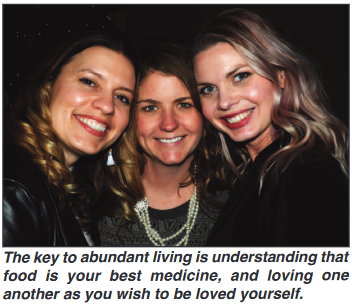 E. Bach, The Bach Flower Remedies, Keets Publishing, Inc., New Canaan, Connecticut, 1952.
E. Bach, The Bach Flower Remedies, Keets Publishing, Inc., New Canaan, Connecticut, 1952.
P. Ody, The Complete Medical Herbal: A Practical Guide to the Healing Properties of Herbs, With More Than 250 Remedies for Common Ailments, Dorling Kindersley, London, 1993.
3. Understand that food is your best medicine. As we have discussed throughout this study, not only drugs but foods directly affect the body-mind-spirit whole of people. We must strive to follow the laws of health that lead to optimum health so we do not need to resort to cures from herbs or drugs, though at times we must in this modern world of toxin-laden soils, water, and air. We need to follow the laws of proper diet, exercise, rest, sunshine, fresh air, thought patterns, and avoidance of accidents. All of these seven points are important, but a proper diet is critical for healthful living. This does not negate the fact that perhaps 80% of the illnesses amongst modern man have a direct connection to negative thought patterns and emotions of fear, grief, jealousy, resentment, and unforgiveness (S. I. McMillen, None of These Diseases, Fleming H. Revell Company, Old Tappan, New Jersey, 1963). Hippocrates, the father of medicine, said, “Let food be your medicine, and medicine be your food,” and again, “If someone wishes for good health, one must first ask oneself if he is ready to do away with the reasons for his illness. Only then is it possible to help him” (https://www.azquotes.com/quote/849880#google_vignette). Here are some excellent books that reveal how food is your best medicine.
H. Bieler, Food Is Your Best Medicine, Random House, New York, 1965.
R. Schmid, Traditional Foods Are Your Best Medicine: Health and Longevity With the Animal, Sea, and Vegetable Foods of Our Ancestors, Ocean View Publications, Stratford, Connecticut, 1987.
J. Wright, Dr. Wright’s Book of Nutritional Therapy: Real-Life Lessons in Medicine Without Drugs, Rodale Press, Emmaus, Pennsylvania, 1979.
R. Hall, Food for Nought: the Decline in Nutrition, Harper and Row, Publishers, Hagerstown, Maryland, 1974.
4. Maintain excellent mind function with a proper diet and lifestyle that is free of drugs. Many people take drugs or overindulge in alcohol because of stresses and abuses they have endured in life: a parental divorce, sexual abuse or other abuses, chronic pain – and the list goes one. These upsets in life can be overcome by the spirit of God coming into one’s life and correcting destructive thought patterns of fear, rejection, anger, hatred, and jealousy. They can also be overcome by changing one’s diet, exercise regime, and total lifestyle to one that follows in Jesus’ footsteps, who was an outdoors man who walked everywhere he went, spent little time in cities, relished the sunlight and fresh air of the outdoors, and smothered the temptation to think any evil of His fellow man, even forgiving the Romans and Pharisees for crucifying him! (Luke 23:34).
As one “reformed” medical doctor stated:
“Psychodietetics has been called … new hope for sufferers who now need suffer no longer from common emotional complaints that until now have been blamed on something eating you, when in fact it is something you are eating. This breakthrough in medical science shows you how food therapy has already helped thousands of afflicted people overcome so-called mental problems that aren’t mental at all!” (E. Cheraskin, W. Ringsdorf, and A. Brecher, Psychodietetics: Food As the Key to Emotional Health, Stein and Day, Publishers, New York, 1974).
Other good sources showing the relationship of stress, nutrition, metabolism to mental health include the following:
G. Watson, Nutrition and Your Min:, the Psychochemical Response, Harper and Row, Publishers, New York, 1972
H. Selye, The Stress of Life, McGraw-Hill Book Company, New York, 1976.
5. Enjoy wine and beer in moderation if they are naturally made, without sulfites and other additives. Totally avoid distilled alcoholic beverages, which are poisonous to the body and can easily lead to alcohol addiction. A maximum of 2 ounces of alcohol per day is a good guide for avoiding an excess of alcohol consumption. Wine has been shown in this study to be very beneficial to healthful living, uplifting the body-mind-spirit continuum.
As a son of Elohim you cannot afford to risk drug usage in your life, nor can you justify excessive use of wine and beer. Live a clean life that is filled with the spirit, and you will never fall prey to the idolatry of drug usage. Pursue healthful living, and as Solomon said in Proverbs 26:2:
“Like a flitting sparrow, like a flying swallow, so a curse without cause shall not alight.”
Take Moses’s advice given to the complaining Israelites when they found the waters of Marah bitter. He said:
“If you diligently heed the voice of the Lord your God and do what is right in His sight, give ear to His commandments and keep all His statutes, I will put none of the diseases on you which I have brought on the Egyptians. For I am the Lord who heals you” (Exodus 15:26).
By keeping God’s commandments and statutes you will avoid the horrible pit of depravity of drug and excess alcohol use, and processed and poisoned foods, which are so common all around us in this modern world. Stay close to the Creator and He “… will put none of these diseases on you.”

